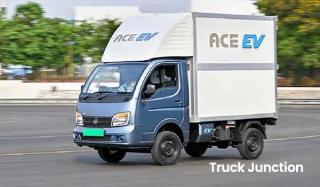How Does The Transport Industry Works With Complete Details

The transportation industry is critical to the operation of all other industrial sectors. Road transport, airlines, pipelines, water transport, and railways are the major sub-sectors of the industry. The transportation sector is highly organised, with each sub-sector further subdivide into several denominations. Though it is still fairly disorganized at the ground level, rapid urbanization and infrastructure projects have create a massive market for the transportation sector and open up numerous employment opportunities. As a result, India’s transportation systems are among the most widely use globally.
The Basic Structure Of The Indian Transportation Industry
The Indian transportation industry has the five most common modes of transportation: railways, roadways, airways, waterways, and pipelines. We are here showing a brief description of each mode in the below section, which will be helpful for you.
Railways
The Indian railway system is the fourth-largest transport system in the world. This industry has a large carrying capacity, operates in all weather conditions, and ensures continuous delivery. Railways are also one of the most reasonable modes of transportation in India.
Airways
India has yet to reach its total capacity in terms of air transport. It is the most expensive model of transportation and has limited availability. Airways are also the fastest and most weather-resistant mode of transportation. During natural disasters, it has provide dependable service. The primary long-distance air carriers are planes and helicopters.
Roadways
India is one of the most extensive and most complicate road networks. The National Highways carry nearly half of all national traffic. Moreover, roadways are the most adaptable in terms of penetration, with the most significant reach. Trucks, tractors, and buses are the most common long-distance land carriers. Taxis, scooters, bikes, and utility vehicles are preferer for short distances.
Waterways
Ports are essential to trade hubs; India has 12 major ports. India also has a vast network of inland waterways. Ports handle more than 90 per cent of all foreign trade in terms of volume. The Waterways sector is the least taxed and ensures independent movement of goods. The disadvantages of water transportation are its limited reach and slow spee.
Pipeline Transport
This industry is specifically designed to transport crude oil, petroleum products, iron ore, gas, and other commodities. The advantages of pipeline transportation include no waste, continuous service over long distances, and fast transport.
Pipelines are a modern transport system for long-distance transportation of gases and liquids such as petrol, natural gas, etc. In modern times, pipelines are used for various purposes. For example, water is supplied through pipelines to homes and commercial areas. LPG is available in many parts of the world and is provided by pipelines. Pipelines are also used to transport liquefied coal.
It is a good, convenient and economical way of transporting petroleum and natural gas as compared to road and rail routes. Pipelines are a new transport in India. Pipelines are one of the best options for transporting crude oil, petroleum products, and natural gas to fertiliser factories and thermal power plants. The cost of laying a pipeline is high, but the cost of running it is minimal. But the number of items to be carried in it should be very high.
Transportation services
The most profitable types of transportation and logistics businesses are Cab services, trucking services, ambulance services, auto-rickshaw services, tourism travel, private bus services, livestock and farm produce carriers, private cruises, packers and movers, leasing vehicles to other transportation businesses, freight transport, luxury cab service for VIPs, and so on. In addition, the Government of India has several financial schemes to assist small businesses and start-ups in establishing themselves. Moreover, you can easily start a transportation and logistic business with the help of commercial vehicles.
And suppose you are seeking the best commercial vehicle according to your business needs. In that case, the Tata Ace mini truck is the best option for you because this mini truck delivers exceptional performance in every manner.
Licence And Registration
All transportation companies must be MCA-registered (Ministry of Corporate Affairs). In addition, several documents must be submitted to the ROC (Registrar of Companies) for approval. The documents at issue are the company’s MOA (Memorandum of Association), AOA (Articles of Association), LLP agreement (depending on the requirement), letter of consent, affidavits, power of attorneys, and application for company incorporation. In addition, various legal compliances must be met depending on the nature of the business, such as labour and employment laws, ESI (Employees’ State Insurance) and PF (Provident Fund) regulations, environmental laws, etc.
Some Important Statistics About the Indian Transportation Industry
- The Indian transportation industry serves a population of 1.35 billion people; demand outnumbers supply, and there is an urgent need for accessible and safe transportation.
- This industry deals with logistics and transportation of people, goods, raw materials, etc.
- The roadways sector dominates the transport and logistics industry; in total, the industry contributes a whopping 6.7 percent to GDP.
- It is an evergreen industry that will never go out of style; starting a transportation business is a lucrative opportunity, as evidenced by a promising compounded annual growth rate (CAGR) of 10.5 per cent.
Transportation And Logistics
Transportation and logistics are inextricably linked. Logistics depend on a reliable transportation system, which increases government productivity. Therefore, transportation is a component of logistics. Logistics necessitates planning, and transportation is a critical component in all stages of logistical operations. In addition, transportation facilitates interaction and trade by allowing raw materials to be acquired and finished products to be transported. Transport accounts for one-third to two-thirds of a company’s logistics budget.
Conclusion
The Indian transportation industry is currently facing infrastructure-related challenges. Roads are generally underdeveloped and congested. Fuel prices are not fully subsidized, and CNG distribution should be expanded (Compressed Natural Gas). As a result, the demand for fast and efficient transportation of goods and people is not being met. The government has launched ambitious initiatives such as constructing new national highways, improved road maintenance and increasing connectivity to remote areas. Increased investments in construction and infrastructure projects show a lot of promise in terms of transportation service demand. However, making breakthroughs is complicated because this sector is unordains and underfund. New PPP (Public-Private Partnership) initiatives aim to accelerate this sector’s growth while maintaining transparency. This industry is undergoing massive transformations to make it easier to run a transportation business.
For more additional information like this blog, please be with us and wait for our next blog.




